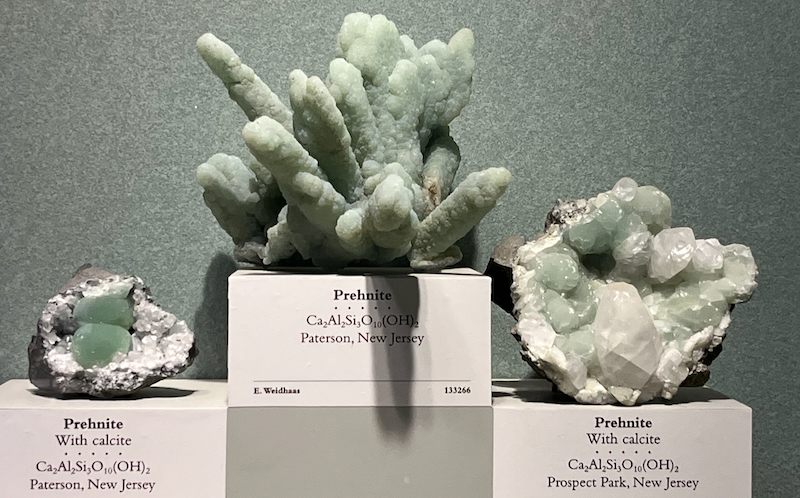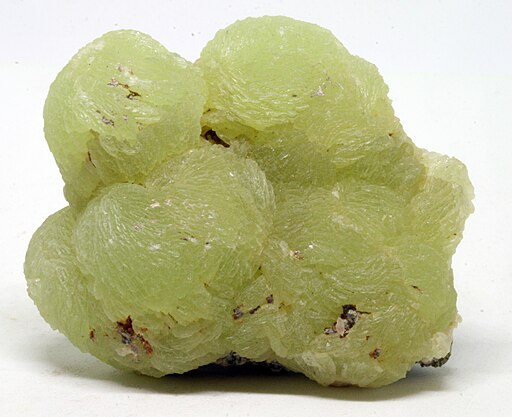Prehnite
As we mentioned in the general information, color isn’t always the best way to tell what a mineral is, but with prehnite, color is very helpful. Yes, you can find it looking somewhat yellow or even colorless and clear, but most of the time it’s a beautiful light “apple green” color. Prehnite usually forms in ball shapes, like pectolite and some malachite, that are actually made of a bundle of crystals, and the surface of the balls is nubbly because you can see the tips of each of the crystals. When a mineral makes a rounded shape this way, people say it has a–weird word warning–“botryoidal” habit (from the Greek for “a bunch of grapes”). You can also sometimes find it as sparkly rectangle-shaped crystals. The most common rock to find prehnite in is basalt, which some people call “trap rock.” If you go to a rock show or look online, these days most prehnite you’ll see is from India, often in amazing large specimens. Where they find it in India is a place called the Deccan Traps, which is a huge deposit of basalt rock that came from the largest lava flow ever on earth, 66 million years ago. In small pockets of space throughout the rock, beautiful crystals of prehnite, apophyllite, stilbite, and others have grown and are waiting to be found!
| Formula | Group or Type | Shape | Hardness | Specific Gravity | Streak | Luster |
|---|---|---|---|---|---|---|
| Ca2Al(Si3Al)O10(OH)2 | Zeolites | Orthorhombic | 6–6.5 | 2.8–3.0 | White | Vitreous to dull |


